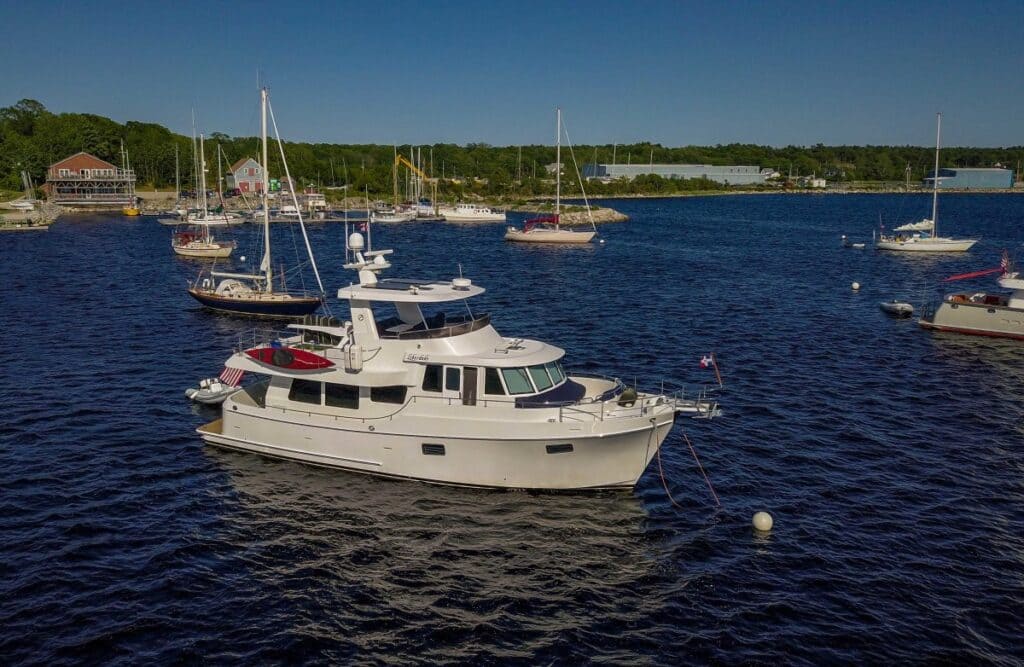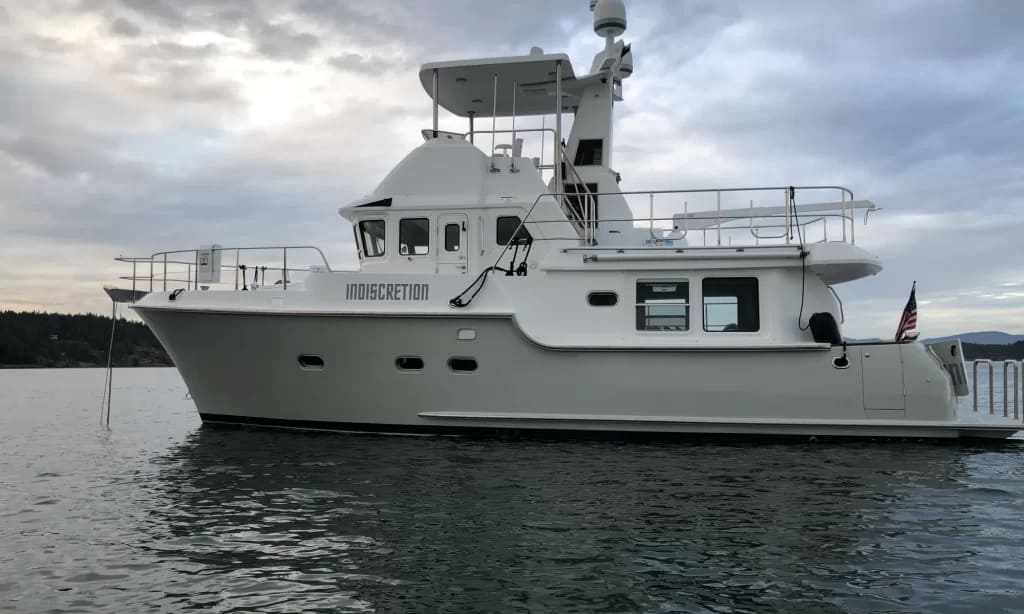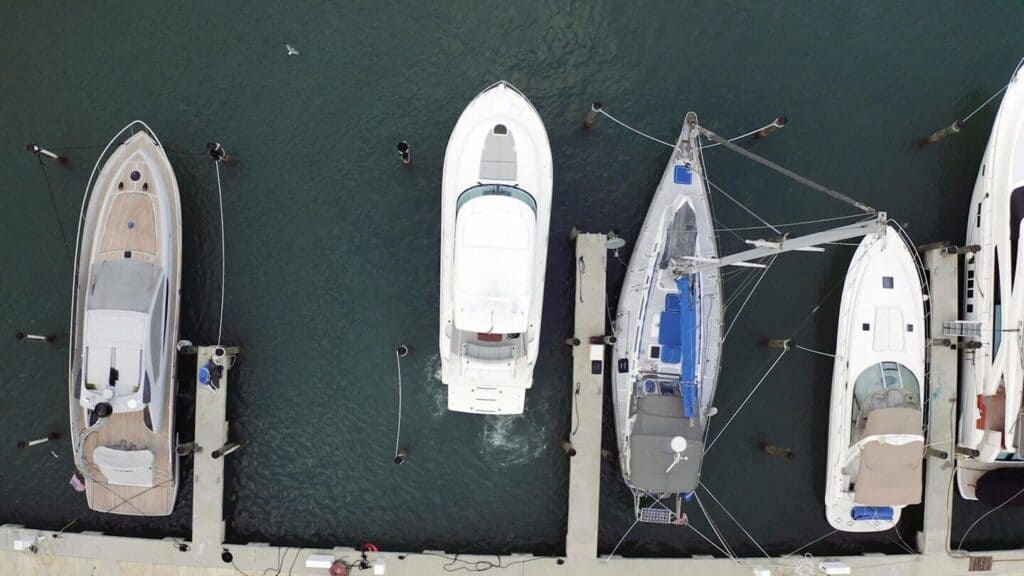Are you a boating enthusiast who likes boating as a hobby? Then you will probably be worried about where to moor the boat perfectly. If you are fond of boating sometimes, then you can easily park or store it in the yard, garage, or any such place. However, if you are someone who boats more frequently, then parking it near the water or over the floating waters is an ideal choice. Now, the question might pop up in your mind: why is it preferable to store it near the water? This is because Boat Mooring facilitates easy launch.
Moreover, each boat specifically designed ropes and chains to aid the mooring process. Nothing excites a boat aficionado more than a safely parked and stored boat. So, understanding the importance of boat mooring, we are here with this article guide to help you with the process. Whether you have a panga boat or a hydrofoil boat, it is important to learn the basics and techniques of mooring.

Understanding the Concept of Boat Mooring
Before delving deep into the techniques of boat mooring, let’s grasp the basic concept first. Boat mooring refers to the act of anchoring a boat to a spot, usually in a harbor or marina, to prevent damage or drifting. This entails the use of mooring buoys, helical anchors in the seabed, or dock lines fastened to structures. The choice is influenced by things like water depth and the current weather conditions. For safely docking your boat and making loading and unloading easier, mooring is important.
Beyond safety, boaters who care about the environment use eco–mooring systems to reduce their influence on the environment. Stability and security for the moored boat and neighboring vessels are guaranteed by proper anchoring. Additionally, routine maintenance and inspections are essential to ensure that mooring equipment continues to be reliable and effective.

Types of Boat Mooring
Do you know that you have plenty of choices when it comes to boat mooring? Yes, you heard it right! You can ace any one of the types to secure and protect your boat over the floating waters. So, this section of the article will cover the types of vessels mooring in detail.
1. Dock Lines for Boat Mooring
Description: Dock lines are an effective means to moor your boat to a dock or wharf. They are necessary for securing your boat. Sturdy materials like nylon or polyester are used to make these lines, which are essential for stability when the wind or tide shifts.
Usage: Boaters fasten the mooring line to hooks or bollards on the dock with one end and their boat with the other. To ensure that the mooring cover boat is properly positioned alongside the dock, adjust the tension on the lines.
Advantages: Boat moorings with dock lines provide a safe and conveniently adjustable way to secure your boat. Furthermore, they provide easy access for boarding, unloading, and loading.
Considerations: To keep dock lines strong and dependable, regular inspection is essential. On the other hand, it’s important to quickly repair any worn or broken lines.
2. Anchor Technique for Boat Mooring
Description: This flexible technique for mooring your boat entails lowering a permanent anchor to the ocean floor. This anchor gives the vessel stability and security; it is usually fastened to an anchor chain.
Usage: To attain the desired scope, boaters lengthen the mooring line and deploy the anchor from the bow of the vessel. This technique enables mooring to cover boats in a variety of places, such as remote anchorages or open water.
Advantages: Boaters can anchor safely in a variety of conditions due to anchor mooring’s versatility and reliability for boat moorings. It’s also suggested if mooring buoys or docking facilities are not available.
Considerations: To guarantee that the anchor holds firmly, appropriate anchor selection and deployment methods are essential. Boaters must be aware of the possibility of dragging or fouling, though.
3. Mooring Buoys: Effective Way of Boat Mooring
Description: The Mooring Buoys offer an easy and secure attachment point for protecting your boat. They are fixed to the seabed. These buoys, which are usually fastened to a chain or rope, provide safety in places where traditional anchoring can be difficult.
Usage: Boaters approach the mooring buoy and moor it to their vessel with lines fastened to fittings or cleats. This technique makes boat moorings quick and simple, particularly in locations with strong currents or restricted anchoring.
Advantages: In locations where traditional anchoring is impractical, anchoring buoys provide a hassle-free way to safeguard your boat. Likewise, they reduce the possibility of harming vulnerable aquatic environments.
Considerations: To make sure that mooring buoys stay firmly secured and in good shape, routine inspection is necessary. Additionally, sailors need to follow local laws governing the usage of mooring buoys.
4. Moorings and Pilings for Boat Mooring
Description: In marinas and harbors, moorings and pilings offer specific locations for anchoring your boat. In high-traffic locations, these moorings, which are made of chains, ropes, or cables, offer stability and security.
Usage: When approaching a mooring or piling, boaters use lines fastened to cleats or fittings to secure their vessel. In regions with significant currents or tidal variations, this technique guarantees dependable boat moorings.
Advantages: In crowded harbors or marinas, moorings and pilings provide a specialized and safe way to secure your boat. They additionally decrease the possibility of collisions or damage from other boats.
Considerations: To prevent mishaps or damage to their boats, boaters should use caution when sailing close to moorings and pilings. Furthermore, to keep mooring hardware in good working order, routine maintenance is required.

Techniques for Secure Boat Mooring
There are various techniques to safely and effectively store the boat over the waters. Let’s delve into the techniques in detail.
1. Proper Line Handling for Boat Mooring
- Any boat owner who wants to moor the boat safely must practice proper line handling. It is essential to handle dock or anchor lines carefully while fastening them to guarantee that they are securely fastened to both the moored boat and the mooring point. To prevent slippage and distribute the load equally, this entails correctly clearing the lines.
- Additionally, correctly coiling the lines keeps them from tangling and guarantees that they are prepared for use when needed. To prevent damage to the boat and help distribute the forces of wind, waves, and currents, the lines should be secured to strong locations on the boat, such as cleats or bollards.
2. Correct Anchor Placement
- For a mooring boat to be successful, the proper anchoring site and depth must be selected. Boaters should take into account many aspects, including wind direction and strength, water depth, surface conditions, and close objects, before deploying the anchor in open water. To make sure that the anchor sets firmly in the seabed, a suitable place must be found, and the anchor must be deployed correctly.
- Enough scope or the length of anchor rode between the boat and the anchor, must be paid out in order for the anchor to hold. However, a well-placed anchor and scope keep the boat from drifting and offer stability in a range of weather conditions.
3. Regular Checks are Important for Secure Boat Mooring
- To ensure the integrity and effectiveness of anchors, mooring covers for boats, and other mooring equipment, regular checks are necessary. Boaters should check their lines for damage, wear, or fraying, especially where they come into contact with bollards or cleats.
- It is important to check anchors for flaws like bending, corrosion, or other issues that can reduce their holding ability. Additionally, to make sure everything is in working order, check the other mooring hardware, including the buoy attachments, swivels, and shackles. Replacing worn-out or damaged parts as soon as possible helps avoid malfunctions that can cause mishaps or damage to the boat.
4. Weather Monitoring
- Keeping an eye on the weather is essential for secure boat mooring, especially in regions that are vulnerable to tidal changes, severe winds, or storms. Boaters should not only be aware of weather forecasts but also be ready to change their mooring plans as needed. To account for variations in wind direction or severity, this could mean installing more lines or repositioning the anchor.
- Boaters may need to find a safe harbor or move to a sheltered spot during heavy weather in order to prevent damage to their vessel. By consistently keeping an eye on the weather, boat owners may make well-informed decisions to safeguard their vessels and guarantee their safety when moored.
5. Backup Systems
- In the case of equipment failure or adverse conditions, having backup mooring systems in place improves safety and provides redundancy. This can include keeping extra anchors or dock lines on board the yacht in case of emergency. Boaters should also think about bringing along extra anchors or other kinds of hooks that work well on various types of bottoms.
- Having backup systems lowers the possibility of mishaps, damage, or loss by giving sailors choices for securely securing their craft in an emergency. Additionally, boat owners can ensure ethical boating practices and compliance with legislation by knowing the rules for mooring a boat in various regions.
You can check 6 common mooring methods in Abhishek Bhanawat’s blog.
Conclusion
Wrapping it up, this article covered the phenomenon of boat mooring to secure your vessel in the waters. It is an ideal option for those who are fond of boating more frequently. Moreover, different types of mooring have also been discussed to give a variety of options to choose from.
Secure Your Sail, Anchor with Style!

